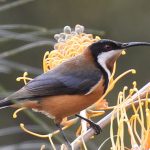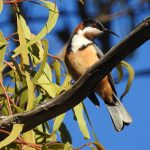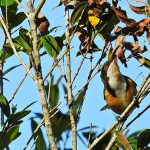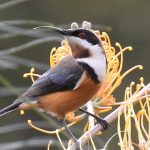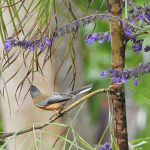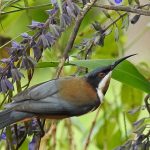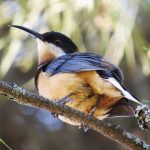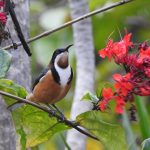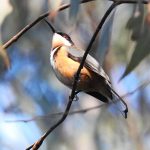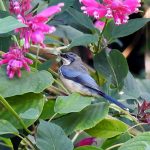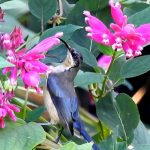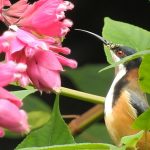EASTERN SPINEBILL
The Eastern Spinebill is a small, strikingly colored bird native to eastern Australia. It is a member of the honeyeater family and is known for its distinctive long, slender bill with a pointed tip.
Eastern Spinebills are easily recognizable by their vibrant plumage. They have a black head with a white crescent-shaped patch behind the eye. Their back and wings are dark olive-green, and their chest and belly are white. The most striking feature is the long, slender, downward-curved bill, which they use to feed on nectar from various flowers.
Eastern Spinebills are found along the eastern coast of Australia, from far north Queensland to southern Victoria and eastern South Australia. They prefer dense, shrubby habitats, including forests, woodlands, and heathlands.
These birds are primarily nectar feeders, using their specialized bill to sip nectar from a variety of flowers, especially those with tubular shapes. They are known to visit a wide range of native plants, including grevilleas, banksias, and correas. In addition to nectar, they also consume insects and spiders.
Eastern Spinebills are known for their hovering feeding behavior. They can hover in front of flowers and use their long bills to probe deeply into the blossoms to extract nectar. This behavior allows them to access nectar that may be out of reach for other birds.
Eastern Spinebills have a melodic and complex song, which includes a mixture of high-pitched whistles and chirps. They are highly vocal and use their calls to communicate with other members of their species and to establish territory.
During the breeding season, Eastern Spinebills construct small cup-shaped nests in the dense foliage of shrubs and trees. They lay two to three eggs, which are incubated by the female. Both parents share the responsibility of feeding and caring for the chicks.
Like many Australian native bird species, it faces habitat loss and competition with invasive species. It is important to protect their natural habitats and promote the planting of native flora to support their nectar-rich food sources.
Eastern Spinebills play an essential role in pollinating many of the plants they feed on. Their foraging behavior helps transfer pollen between flowers, contributing to the reproduction and survival of these plant species.
Eastern Spinebills are a beautiful and ecologically important bird species in Australia. Their unique feeding behaviors and striking appearance make them a fascinating part of the country’s wildlife. Conservation efforts are crucial to ensuring their continued presence in the wild.

